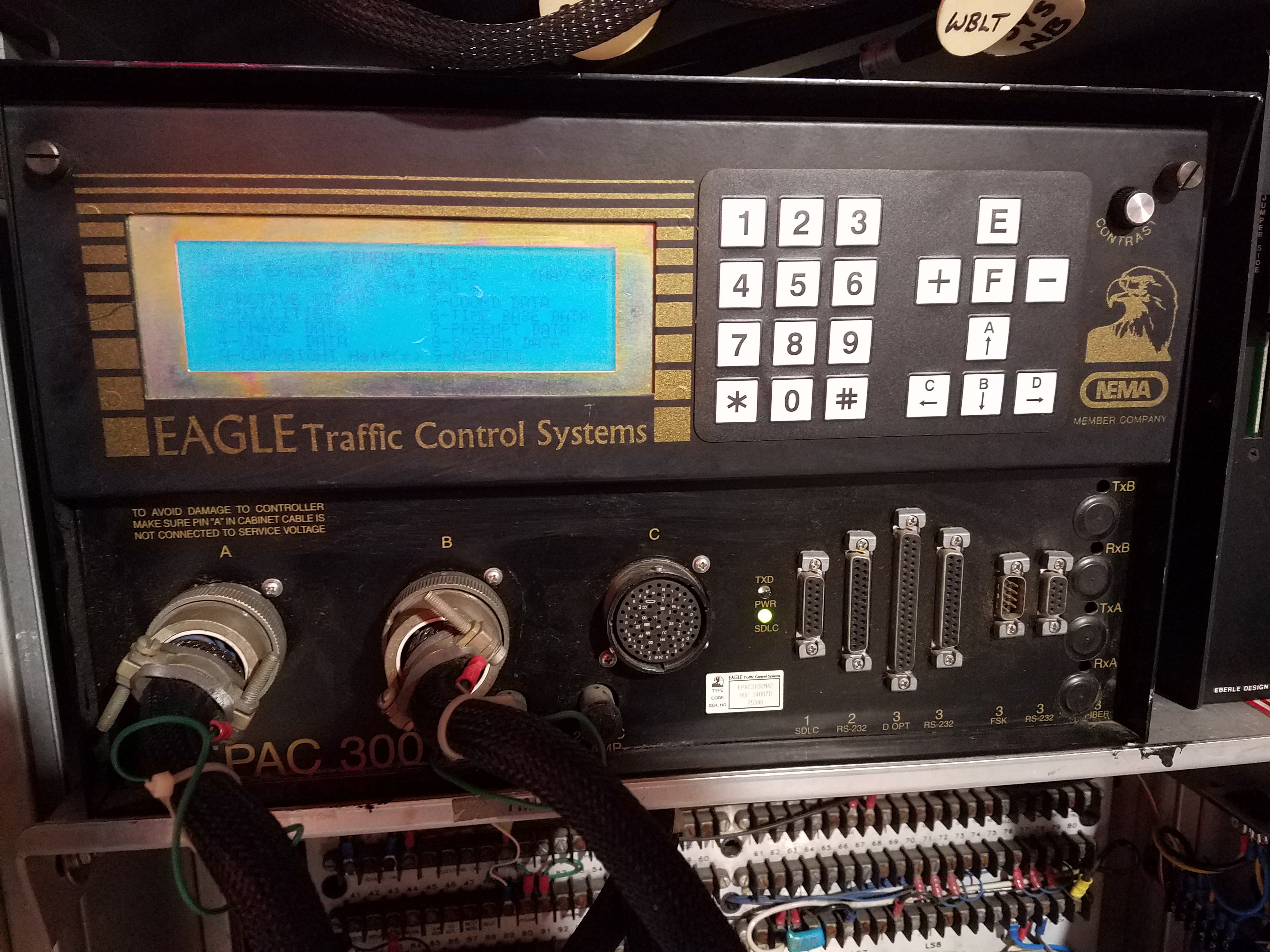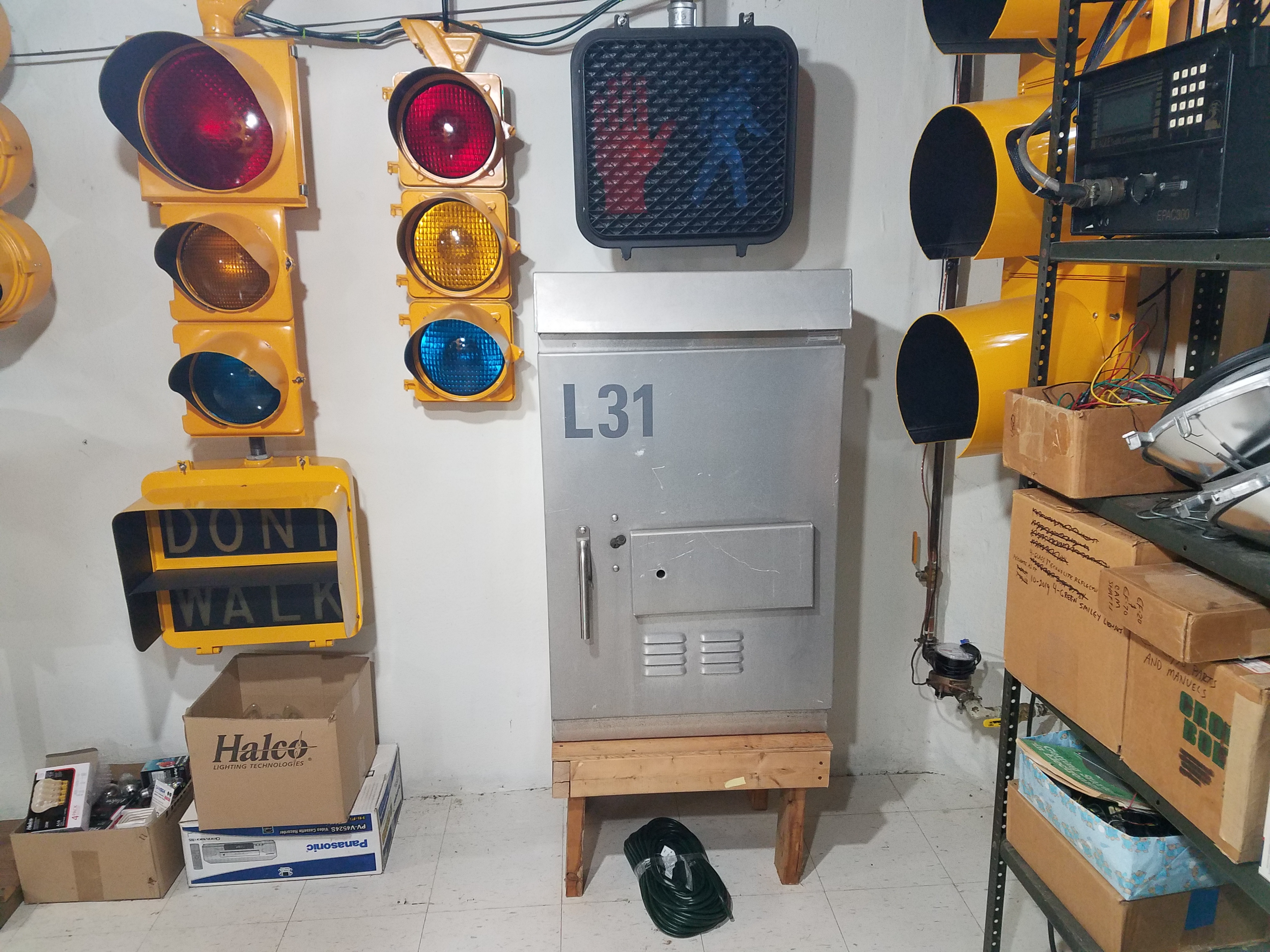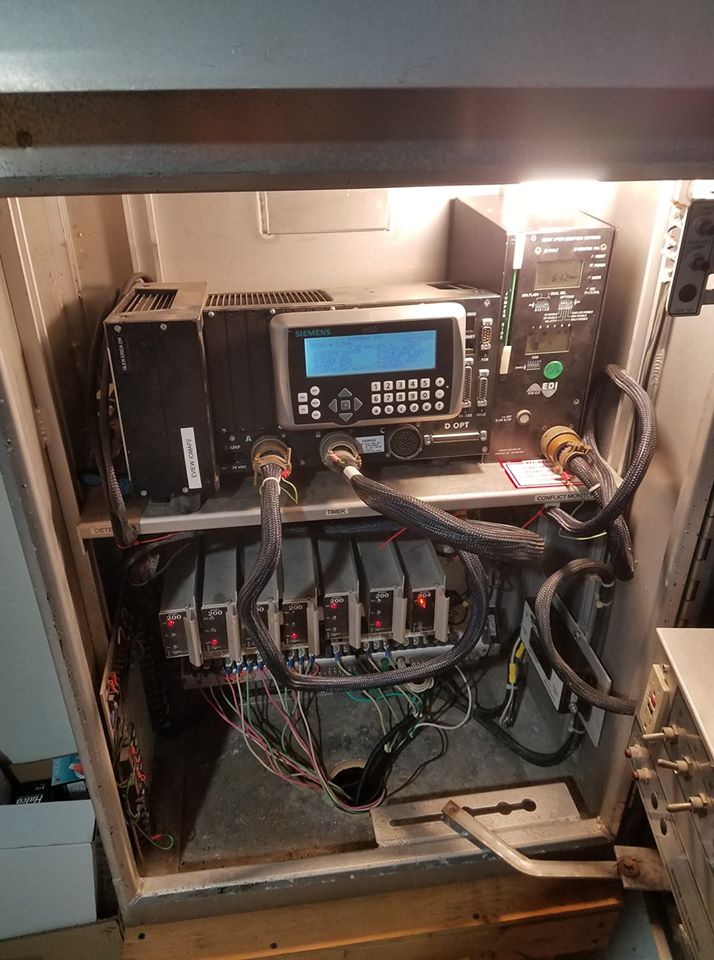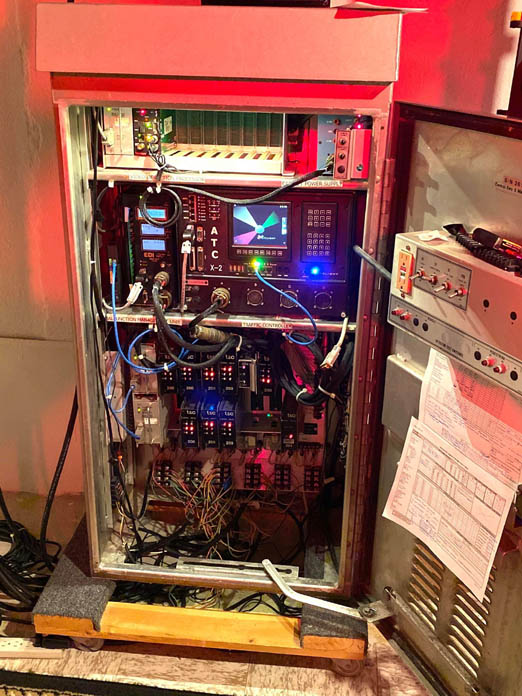NEMA Traffic Signal Controllers
This is a NEMA (National Electrical Manufacturers Association) controller. It was acquired in the fall of 2012.The National Electrical Manufacturers Association developed the standard for this controller so that all NEMA controller parts can be interchanged between cabinets without compatibility issues.
There are two main types of NEMA controllers. The first is TS1, which is shown here. Eventually, equipment became more advanced and NEMA TS2 was developed.
There are also two types of TS2, type 1 and type 2. See the bottom of the page for a brief explanation of TS1, TS2 and TS2 type 1 and 2.
This is a four phase controller set up. It allows for main street and side street thru signals as well as left turn signals for both and two overlaps. It also has pedestrian signal capabilities for main street and side street. I have the controller set to "think" it is constantly receiving pedestrian and vehicle "calls" so that it continuously sequences back and forth. In the future, I could hook up push buttons or motion detectors to simulate pedestrian and vehicle sensors.
This is the actual controller box itself. It is a Traconex 390. The programming menus for this controller are a bit intimidating at first, but eventually you can understand the basic layout of the menus. There are a lot of features on this controller that I will never need to use in my little basement display. There are also features I do not even understand. These controllers are capable of a lot of different things and are far more advanced than my other real controllers, the Eagle EF-15 and EF-70, the Marbelite M20 and the Crouse Hinds KS electro-mechanical controllers.
Here is a close up of the display on the controller. It is saying that phase 1 is next with the N. The PVP stands for PED VEHICLE PED calls on phases 2, 3 and 4. I'm not sure what the G stands for. The 4 indicates that phase 4 timeing is being displayed and YEL means yellow clearance which is at 3.7 seconds counting down. The RDD indication on the bottom is where phase 5-8 information would be displayed if this was an 8 phase controller, but since it is only a 4 phase, RDD is always displayed on the bottom. RDD stands for Red Dwell.

UPDATE! I've recently upgraded the controller in my NEMA cabinet to an EPAC M42!
This is the conflict monitor. Its function is to monitor for problems, like a green light for conflicting phases, that could confuse drivers or cause an accident. If a problem is detected it puts the controller into flash and stops the controller box right at the point that the problem was detected.
This is a load switch. The controller operates the load switch with 24 volt DC. The load switch is like a solid state relay in that it turns on and off the 110 volt AC signal indications based on what the controller tells it to do. There are LED indications on the front of the load switch to show what signal lamp it has turned on at any given time. It also works with pedestrian signals, but the middle LED (yellow indication for vehicle signals) is not used with pedestrian signals.
As I said above, the setup on this page is TS1.
Here is a video of this cabinet with it's M42 controller running my signals.
In June of 2020, I added a second NEMA cabinet to my
collection.
This one is a smaller sized cabinet. It is setup with phase 1 and 2,
overlap A and B and pedestrian signals on phases 1 and 2.
The controller is a Siemens M52.
UPDATE! The M52 controller pictured eventually died and I replaced it with an older EPAC M42 just like the one pictured above in my other NEMA cabinet.


The two different NEMA specs...
Thanks to Nick B. for the information on the different NEMA specs.
Below is Nick's NEMA TS2 Type 1 controller cabinet.

The top shelf left side is the detector rack with an Iteris Edge 2 video detection processor card installed (the black card). The silver card plugged into the left of the video card is a BIU to communicate the rack with the cabinet.
The blue box on the right is an Econolite cabinet power supply. You need a separate power supply in TS2 cabinets to provide the 24 volt DC to the backpanel and 12 volt DC to the rack.
Bottom shelf left to right...Wireless bridge that connects to the internal web server in the controller to operate the cabinet from a browser.
Next to that is a Malfunction Management Unit which is essentially a conflict monitor with communication capabilities for TS2 cabinets. The MMU brand is
EDI MMU16LE.
On the right is the Intelight X2 controller with Android color touch interface. Capable of 40 phases.
Then under that is the backpanel which is essentially the same as TS1 but with the 2 BIUís for interfacing to the cabinet since there is no point to point wiring like in TS1.
This page was originally posted on 7/16/2002.
Originally my NEMA setup was just a panel, controller and monitor mounted in a
wood cabinet.
I left pictures of that setup on this page until October 2019 when
I decided to just delete them and show the controller cabinet I upgraded to in
2012.